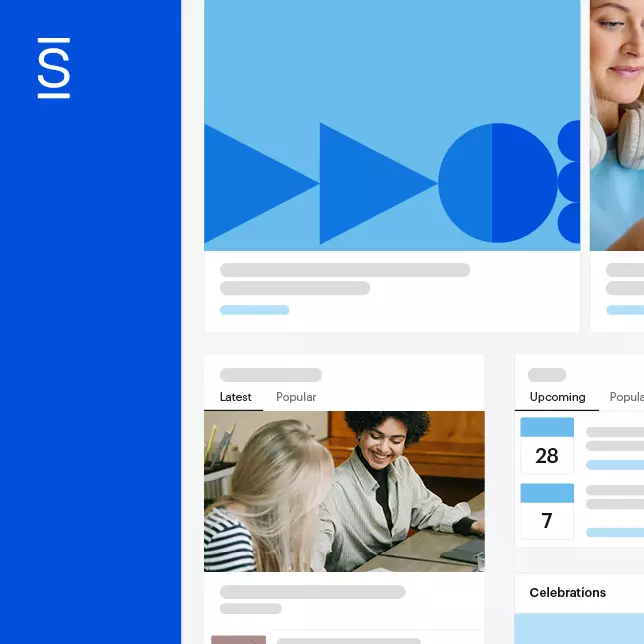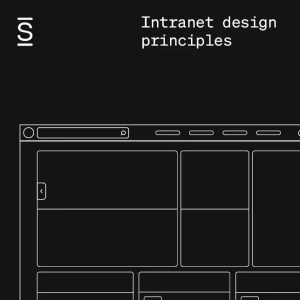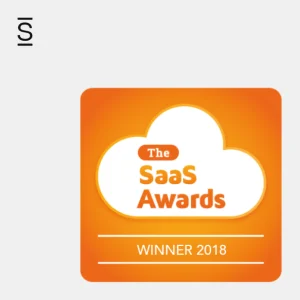Intranets have transformed in recent times, bringing much greater value to organizations and employees.
A few years ago, traditional intranets dominated. These were static repositories of content and corporate messages that most employees ignored because they delivered few benefits. Even though intranets had been around since the mid-nineties, they had not kept up with the times.
Today, things are very different. The best modern intranets are dynamic and lively communication and collaboration channels that employees enjoy using, and that help organizations achieve their strategic goals. Although some organizations are still playing catch-up, a 21st century intranet looks very different to its equivalent from a few years ago.
Here are eight essential attributes of a modern intranet:
1. Clean, not cluttered
In the past, some intranets have been guilty of trying to cram as much content as possible onto the homepage. This isn’t surprising given that intranets perform multiple functions and homepage real estate is at a premium. But the net result is a cluttered homepage that is overwhelming and off-putting, managing to disengage and confuse employees at the same time.
Modern intranets are influenced by consumer websites, social media and the interfaces from mobile applications. The result is a much cleaner design and attractive intranet user experience, with a less confusing and easier to use interface. Now employees actually want to visit the intranet!
2. Dynamic, not dreary
More often than not, traditional intranets are dominated by pages and pages of static content that is hardly ever updated or visited. Tumbleweed blows through the little-used and little-loved equivalent of a digital desert.
Modern intranets are different: They are inherently social, with lively contributions and constant updates from employees. Organizations don’t sit still and neither should the intranet that serves them. The 21st century social intranet is dynamic, lively and fast-paced.
3. Top down and bottom up
Old intranets are dominated by formal, top-down communications. Items like news and updates from the CEO are important, but a modern intranet features both corporate communications and contributions from employees.
A 21st century intranet is inclusive and gives everyone a voice, from senior management down to the employees in the staff restaurant.
4. Searchable, not frustrating
An inability to find relevant content is always near the top of employees’ lists of intranet woes. Poor searchability wastes enormous amounts of time and is exasperating.
A modern intranet needs to have great searchability through a decent search and logical structure. Employees can find what they need with a minimum of fuss and the intranet delivers on one if its most basic premises. Job done!
5. Pull (not push)
Unlike the old days, nobody can force employees to use a modern intranet. It’s very much about attracting users to read your content.
A key way to do this is to ensure that individuals can effectively control and personalize their experience by subscribing to the content channels they want, joining the communities they like and even customizing the look and feel. The days of a push model for intranet content are truly gone.
6. Relevant, not rubbish
Nobody wants to go into the intranet and see content that feels totally irrelevant or doesn’t quite ring true. Traditional intranets have this problem in abundance, usually because of issues to do with how content is managed and accessed.
Modern intranets have great content that is targeted, timely and has a clear purpose.
7. Enablement, not disengagement
In the old days, some intranets offered little help to busy employees desperate to get their work done. A modern intranet is the complete reverse, enabling employees to carry out their roles more effectively.
By facilitating access to the right data, knowledge and learning materials, as well as connecting users to experts and professional communities, employees find themselves better equipped to do their job. In the long run this can even help with careers, and any contribution to personal mastery is highly engaging for individuals.
8. A mirror, not a mirage
Ultimately, an intranet should represent and reflect an organization and its people. It needs to feel inclusive and honest. It must be a mirror, not a mirage.
If the intranet feels as if it is just full of shiny corporate content, or if employees aren’t able to express honest opinions, it will rapidly lose credibility. It may also be regarded with suspicion if it doesn’t represent all users from each location, line of business or function.
Does your intranet keep up with the 21st century?
Intranets have changed. A 21st century intranet should be dynamic, efficient and social. This means it is valued by organizations and their employees. If you’re still stuck with a traditional intranet that feels like it belongs to the last century, it’s time to start thinking about moving forward. You might be surprised at how quickly you’ll experience some of the intranet benefits!

















